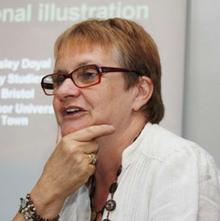The Alma-Ata Declaration was endorsed by the 32nd World Health Assembly held in Geneva in 1979, which approved a resolution acknowledging the key role of primary health care (PHC) for the attainment of acceptable health levels for all. However, despite the initial enthusiasm, it was difficult to implement healthcare in accordance with Alma-Ata principles.This article turns the spotlight on the relevant reasons

by Pietro Dionisio
Degree in Political Science, International Relations
Cesare Alfieri School, University of Florence, Italy
The Reasons Behind the Flop of Alma-Ata Principles
Universal Health Coverage: Really a Long Way Off
“The main goal of universal health coverage is to ensure that all people obtain the health services they need without suffering financial hardship when paying for them in order to avoid any poverty trap” [1].
For a country to achieve universal health coverage (UHC), several factors must be in place, including:
1) A strongly efficient, well-run system meeting health priority needs through a people-centred, integrated approach based on:
-proper information and tutorial strategies for health keeping and disease prevention;
-early detection of conditions negatively affecting health;
-appropriate disease treating capacity; and
-adequate care and rehabilitation frameworks.
2) Affordability, by effective public health financing services that give up out-of-pocket expenses by the users.
3) Equity, including by securing non-discriminatory access to essential medicines, care and technologies for health and to services for communicable/non-communicable diseases and maternal/child health.
4) Well-trained, motivated and skilled health workers to meet the needs of patients through high quality, best available evidence services.
The points above are without prejudice to the critical role in assuring human health played by sectors including transport, urban planning and overall education services.
UHC has a direct impact on people’s health. Universal access to health services enables people to become more productive and active contributors to their families and communities. It also ensures that children can go to school and learn. At the same time, financial risk protection prevents people from being pushed into poverty when they have to pay for health services out of their own pockets. UHC is thus a critical component of sustainable development and poverty reduction, and a key element of any effort to reduce social inequities and inequalities. In essence, UHC is the hallmark of a government’s commitment to improve the well-being of all its citizens.
UHC is firmly based on the WHO constitution of 1948, declaring health a fundamental human right, and on the Health for All agenda set up by the Alma-Ata Declaration in 1978. In such a context, equity is a paramount, meaning that countries need to track progress not just across a vague “national population” term but within different groups including by income level, sex, age, place of residence, civil engagement, social attitudes and behaviors, migrant status and ethnic origin.
The Origins of Primary Health Care
The concept of primary health care (PHC), in the last decades, has had a noteworthy influence upon health workers, especially in less-developed countries.
Since the late 1960s and early 1970s, the US was involved in a crisis of its world hegemony. It was in this political context that the concept of PHC emerged. Since this moment, the vertical health approach[2] used in the fight against malaria by US agencies and WHO was being criticized. New proposals for health and development appeared. For instance, Kenneth W. Newell, a WHO staff member since 1967, who collected and studied the experiences of medical auxiliaries in developing countries, argued that “ a strict health sectoral approach is ineffective”[3]. In addition, the 1974 Canadian Lalonde Report[4] deemphasized the importance attributed to the quantity of medical institutions and proposed four determinants for health: biology, health services, environment and lifestyles[5].
An important role for the PHC concept formation was played by the Christian Medical Commission. As a specialized branch of the World Council of Churches and the Lutheran World Federation, this organization was created in the late 1960s with the mission to emphasize the training of grassroots village workers equipped with very essential drugs and simple methods. In 1970, it created the successful journal “Contact”, which adopted the expression “primary health care” (one of the first times this term was used). Noticeably, from 1974 a collaboration between the Commission and WHO was formalized.
A further element to be taken into account to understand the inspiration for PHC, was the widespread attention worldwide to the massive expansion of rural medical services experienced in communist China. In this process a notable role was played by the so called “ barefoot doctors” whose number increased between early 1960s and the cultural revolution. They were a different group of village health workers who lived in the community they served by actively stressing rural rather than urban healthcare, preventive rather than curative services and combining Western and traditional medicines[6].
The emergence of PHC was also backed by the new international context characterized by the presence of decolonized African nations and the propagation of national, anti-imperialist and leftist movements in many less-developed countries. These changes led to new proposals by some industrialized countries.
The main event towards the achievement of PHC model was the international conference taking place at Alma-Ata (Soviet Union) on 6-12 September 1978.
The idea of an international conference on PHC emerged from the Chinese delegation to the WHO. At the beginning, the Soviet Union opposed the proposal by upholding a more medically oriented approach for less-developed countries. Subsequently, based on awareness that PHC movement was growing, they started supporting the meeting and offered a location too[7].
Nearly 3000 delegates from 134 countries and 67 international organizations took part in the conference which was also attended by UN and international agencies like the International Labor Organization, the Food and Agriculture Organization and the Agency for International Development. NGOs, religious movements (including the Christian Medical Commission), the Red Cross, Medicus Mundi and political movements including the Palestine Liberation Organization and the South West Africa People’s Organization, were also present, whereas, for political reasons, the Chinese Government was absent[8].
The fact that this conference represented a cornerstone event in the history of international healthcare, is demonstrated by the Declaration it released as an universal and bold statement mainly focusing on three points:
- appropriate technology;
- opposition to medical elitism;
- health as a means to achieve social-economic development.
Regarding the first point, the used expression “disease oriented technology” incurred the criticism of envisaging too much sophisticated, expensive or irrelevant technologies to the common needs of the poor. Critics also stressed that the creation of urban hospitals in less-developed countries would forge a culture running contrary to the independency of consumers, while only benefiting a minority through a poor share of available funds and human capital. In order to solve these issues, it was emphasized the need of using equipped medical technology to link in with people needs, while being scientifically sound and financially feasible. Relevantly, a decentralized approach based on setting up health units in rural areas, in lieu of city hospitals, was seen as a more cost-effective policy.
The second point emphasized the opposition against medical elitism including health personnel overspecialization and top-down health policies in developing countries. In this connection, the Declaration focused on the need to appropriately train health staffs and increase the participation of communities in sanitary matters. The need for working together with traditional healers, such as shamans and midwives, was also emphasized.
The third point of Declaration linked health to development. Health was seen not as an isolated element but as an intrinsic tool to achieve improvements of life conditions by an inter-sector approach whereby public and private institutions should work together on health education, adequate housing, safe water and basic sanitation, among other things. This vision echoed in the words of WHO Director H.T. Mahler supporting the idea that health, far from being a mere byproduct of economic progress should be a key engine for development “we could. . . become the avant-garde of an international conscience for social development”[9].
The Alma-Ata Declaration was endorsed by the 32nd World Health Assembly held in Geneva in 1979, which approved a resolution acknowledging the key role of PHC for the attainment of acceptable health levels for all.
However, despite the initial enthusiasm, it was difficult to implement healthcare in accordance with the Alma-Ata principles.
Criticism to Alma-Ata and New Proposals for PHC
The Alma-Ata Declaration was criticized for being too wide and for having an unrealistic timetable (the slogan “health for all by the years 2000” was considered not feasible by a great portion of scholars).
In this regard, the Rockfeller Foundation in 1979 held a conference in order to identify the most cost-effective strategies and examine the status of interrelation between health and population programs. The meeting was inspired and based on a paper by Julia Walsh and Kenneth S. Warren entitled: “Selective primary healthcare, an interim strategy for disease control in developing countries”[10]. The paper, which did not represent criticism against the Alma-Ata Declaration, focused on specific causes of death, largely on the most common children’s threats in developing countries, including diarrhea and diseases following the lack of vaccination programs. The authors highlighted an entry point strategy through which basic health services targeted to achievable objectives could feasibly be developed both in financial and temporal terms. This new perspective was named “selective primary healthcare”, meaning a set of low-cost technical interventions to address some crucial health problems in less-developed countries.
In essence, the selective primary healthcare (SPHC) mainly focused on four interventions:
- growth monitoring;
- oral rehydration techniques;
- breast-feeding;
- immunization
Growth monitoring was considered an important instrument to identify, at an early stage, children who were not growing as they should.
Oral rehydration aimed at controlling diarrheal disease outbreaks by electrolyte water solution packets.
Breast-feeding emphasized the protective and nutritional value of giving breast milk alone to children for the first six months of their life.
The last intervention, immunization, underpinned vaccination campaigns against communicable diseases, especially in the early childhood.
These four interventions have indeed several positive effects: they are easy to control and evaluate, are measurable, have clear targets and, due to the fact that indicators of success and reporting can rapidly be produced, earmarked funding appears quite easy to obtain.
Relevantly, a debate came out soon between PHC and SPHC approach backers.
The backers of comprehensive PHC accused SPHC of being an approach diverting attention away from basic health and social development while not taking into proper consideration, and so not addressing, the social causes of diseases. Another point under the fire of criticism was the fact that monitoring was difficult to undertake since it required the use of charts by illiterate mothers.
And Newell, one of the architects of PHC idea, stated that “[SPHC] is a threat and can be thought of as a counter-revolution. Rather than an alternative, it . . .can be destructive . . . Its attractions to the professionals and to funding agencies and governments looking for short-term goals are very apparent. It has to be rejected”[11].
In the face of this, US agencies, the World Bank, and UNICEF started to focus on some aspects of SPHC. As a result, there was mounting friction between the WHO and UNICEF during the early 1980s, with debate centred around three main questions:
-What is the meaning of PHC?
-How is PHC to be financed?
-How is it to be implemented?
PHC has several meanings, so it was not easy to define. In its more radical version, it was seen as an adjunct of social revolution. This perspective was considered as something undesirable and drew a lot of criticism against Mahler and WHO that began to be seen as a politicized organization. Others considered this point of view simply unrealistic and thought it was impossible to expect those changes from the conservative governments of developing countries. Firstly, they stated that the political power of rural people was overestimated and that, consequently, the thrust of some health experts was misplaced. Another bone of contention was the vision of communities in the developing countries as a pyramid willing to participate in health programs should its leaders be given the necessary information. This vision was judged quite idealistic on the grounds that those communities and their learning processes were often diverse and complex.
Critics also considered the PHC target of extending health services to rural areas as an addition to preexisting medical services. As such, they saw PHC as a second quality care, something like “primitive” and a means to keep poor people under social control.
The second point of debate referred to the financing procedure in order to make the Alma-Ata Declaration a sustainable one. Admittedly, when compared with other international campaigns (such as the global malaria eradication program of the 1950s, where bilateral funding assistance was provided by UNICEF and the US), no clear funding resources were quoted in the Declaration as regards health workers training, nutrition and safe water programs or new hospitals building. As a result, it comes as no surprise that many international agencies did prefer to engage in short-term, clear budget initiatives rather than in too broad programs [12].
This links in with the fact that, during the 1980s, several less-developed countries faced an economic slump and burdensome foreign debt that negatively impacted on the availability of public resources for health. Moreover, a drastic restriction in the available funding for healthcare in developing countries arose from the emergence of neo-liberal policies by governments in the most affluent countries.
This changing political context fostered deeply rooted conservative attitudes among health professionals. For instance, several high-income physicians, based in city hospitals and trained in prestigious medical schools (like US universities), used to consider PHC as a professional step-down in monetary and social prestige terms. The resistance of medical doctors worsened at the time when, coupling with awareness of the lack of any effort to reorganize medical education around PHC and enhance the prestige of personnel, they feared they were going to lose their privileges and power.
An additional problem, as mentioned above, referred to the implementation of the Declaration. In the post Alma-Ata period, different strategies were adopted by the signatory countries:
- Negation: no concrete steps were undertaken to put the Declaration into practice.
- Legislation: the Alma-Ata Declaration was copied into a lot of National Legislations. Sometimes this was a starting point for action, other times it was the start of a continuous process of “lip-service” to PHC ideas, without concrete political commitment.
When action was undertaken, four strategies emerged:
- Implementation: for some countries (Cuba and the rural areas of China) the implementation of the Declaration was in continuity with already existing developments.
- Adaptation of existing health systems: many countries opted for healthcare reforms, trying to implement the Alma-Ata Declaration by a process of change of the existing healthcare structures.
- Innovation: countries opting for starting a primary healthcare structure, apart from the existing system.
- Importation: the primary healthcare system was “imported” into the framework of bilateral cooperation, multilateral agencies or non- governmental organizations.
Due to the fact that a great majority of international agencies favored SPHC, many less- developed country governments decided to create underfunded PHC programs by concentrating efforts mainly on one or two selective interventions. As a result, the friction between those who advocated vertical, disease oriented programs and those who advocated community oriented programs was accepted as a natural state of affairs, irrespective of the situation of confusion and inefficiencies bound up with this context.
During the 1980s, Mahler continued his fight for a comprehensive PHC, but he was quite often alone because of the inadequate support by WHO’s bureaucracy and his allies outside WHO. When, in 1988, Mahler ended his third mandate as WHO Director General, none of the candidates to succeed him seemed to have the right energy to bring off the battle for comprehensive PHC.
The Japanese Hiroshi Nakajima was elected as the new WHO Director General, and it was immediately evident that the communicativeness and the charismatic personality of his predecessor were lacking.
In the last decade of the 20th century, it became clear that the goal of “health for all by the years 2000” would not be reached. Part of the reasons can be summed up as follows:
– The focus on SPHC and on “vertical programs” was disruptive for the development of an horizontal PHC approach taking care of individuals, their families and communities. Relevantly, the HIV/AIDS pandemic played a key role by shifting budgets towards “vertical programs”, instead of PHC investment programs.
– Moreover, the PHC strategy underestimated the power of pharma industry and hospitals in the healthcare system, and failed to take doctors into proper consideration. This coupled with the lack of a clear strategy to adequately train doctors and health worker staffs, even if the idea of multidisciplinary PHC teams was present in all documents. Taken together, these circumstances brought about a slowdown in the development of PHC project[13].
– Additionally, a point of weakness referred to donor agencies’ requirements of results to be achieved by the funding cycle period or the agency’s mandate. While encouraging short-term planning and readily measured program objectives, these requirements ruled out the engagement in PHC[14] and civil society involving projects looking at bottom-up approaches and participatory frameworks including relevant to health infrastructures building.
– Another bar to the achievement of UHC was the feeling that the PHC idea strictly linked in with the concept of solidarity. This value came under pressure in the 1980s and the 1990s. The disappearance of the “Iron Curtain”, the “war on terror”, the growing individualization and globalization, with increasing flows of migrants, all eroded the idea of solidarity as the basic engine for comprehensive PHC regimens.
– Many problems also arose from the fact that the Declaration was filled with ideology. It clearly stated, indeed, what to do but not how to reach the goals laid down in its statements. As such, many professionals and decision makers regarded its principles only as program indicators to directly translate into operational resolutions and policy directions of each country. Relevantly, even WHO stated that: “in their post Alma-Ata enthusiasm many decision makers assume that, since primary healthcare is supposed to use simple methods, it would be simple to implement”[15].
– What’s more, obstacles even arose from the fact that the need for contextual adaptation of the Alma-Ata principles was underestimated. The PHC approach was expected to act as a flexible model prone, at least in principle, to readapt to local needs and situations. In reality, because of its conceptual appeal, because of its heavy international promotion by WHO and other international bodies and because of deep gaps in many countries needing immediate action, it was often adopted without first exploring and defining the socio-cultural environment on to which it had to be implanted. Health planners from WHO and national governments failed to grasp the complexity of social organization within rural settings, and even failed “to construct resource foundation adequate for describing health and illness as processes constituted as much by forces of languages, socio-cultural structure, political and economic organization as biological and psycho-physical events”[16]. This lack of contextual organization brought about problems to international agencies, national governments, ministries of health, local authorities who were defining their central objectives by the theoretical framework of PHC. As an example, while rural inhabitants generally wanted the attainment of as much care and treatments as their urban counterparts, PHC advocates often ignored this reality, labelling instead the villagers for not quickly perceiving the true advantages of preventive healthcare, something that took international healthcare professionals decades to grasp. As such, there was a perpetration of illusion that PHC could deliver new, valuable messages into a social vacuum[17].
– The circumstances highlighted above linked in with evidence that the problems faced by the PHC proponents were really huge. As such, grounding on awareness that no miracle solution would be able to quickly transform global social and economic inequalities into something better, the PHC proponents understood that the completion of PHC project would take a very long time while hinging on the policy directions by governments and their impact on health, society, equity, politics and world order outcomes.
Overall, as a result of the facts stressed so far, the PHC model was introduced at very variable levels in the countries worldwide. Irrespective of the lot of gaps and inefficiencies bound up with these circumstances, especially in Africa and less-developed countries, some results from PHC implementation even in those countries with incredible social and economic problems are being documented. As in the case of Kenya where the political will of government and international aid resources have been producing significant improvements in the UHC issue.
Unfortunately, despite isolated examples, there is still hard work to do now that the impact of governments’ policies on public health and access to care and appropriate, affordable, high-quality treatments is an issue of global concern in the international agenda.
And this occurs at a time when free trade agreements and choices by the administrations in wealthy countries are turning policies into decisions which protect monopolistic interests at the expense of non-discriminatory, equitable access to health.
Admittedly, the struggle against economic and governmental interests is long and hard. But this is another story.
REFERENCES
[1]WHO, “What is Universal Coverage?”, World Health Organization. Web source: http://www.who.int/health_financing/universal_coverage_definition/en/
[2]The vertical approach focuses on fighting one disease at time. The horizzontal one, as defined by WHO, focuses on “ all the activities whose primary porpuse is to promote, restore or maintain health”.
[3]K.W. Newell. “Health by the people”, Geneva, Worl Health Organization, 1975,xi.
[4]The Lalonde Report is a 1974 report produced in Canada. It proposed the concept of “health field”, identifying two main health-related objectives: the healthcare system; and prevention of health problems and promotion of good health. The report is considered the first modern government document in the Western world to acknowledge that our emphasis upon a biomedical health care system is wrong, and that we need to look beyond the traditional health care (sick care) system if we wish to improve the health of the public.
[5]Canadian Department of National Health and Welfare, A New Perspective on the Health of Canadians. ( Ottawa, 1974)
[6]V. W. Sidel, “The Barefoot Doctors of the People’s Republic of China”, New England Journal of Medicine 286 (1972): 1292-1300.
[7]The offer, also, resulted from a growing competition between the traditional communist parties and the new pro-chinese organizations that emerged in several developing countries.
[8]The Sino-Soviet conflict had been worsening since the 1960s.
[9]H. T. Mahler, “WHO’s mission revisited: Address in presenting his report for 1974 to the 28th World Health Assembly, 15 May 1975”, 10, Mahler Speeches/Lectures, box 1, WHO Library, Geneva.
[10]Walsh J. A., Warren K. S., “Selective primary healthcare, an interim strategy for disease control in developing countries”, N. Engl. J. Med., 301, 967-974, 1979.
[11]K. W. Newell, “Selective Primary Healthcare: the Counter-Revolution”, Social Science and Medicine 26 (1988): quote from p. 906.
[12]S. B. Rifkin, F. Muller and V. Bich-mann, “Primary Healthcare: On Measuring Partecipation”, Social Science and Medicine 26 (1988), 931-940.
[13] The openness of the public towards interventions from public health (campaigns for prevention, health promotion) is influenced positively by the presence of efficient clinical curative services because they contribute to the creation of “trust” towards the health system. The primary health care-services were relying to a large extent on nurses for the clinical work, but very often they were faced with diagnostic responsibilities that they were not prepared for.
[14]PHC: Primary Healt Care.
[15]WHO: National Health Development Networks in Support of Primary Healthcare. Geneva, World Health Organization, 1986.
[16]LH. Connor, N. Higgenbothon: A sociocultural perspective on rural health development: a proposal for educating health professionals in Asia and the Pacific. Honolulu, East-West Center, 1983.
[17]L. Stone: Primary healthcare for whom? Village perspectives from Nepal, Social Science and Medicine 1986; 22 (3), pp. 293-302.




